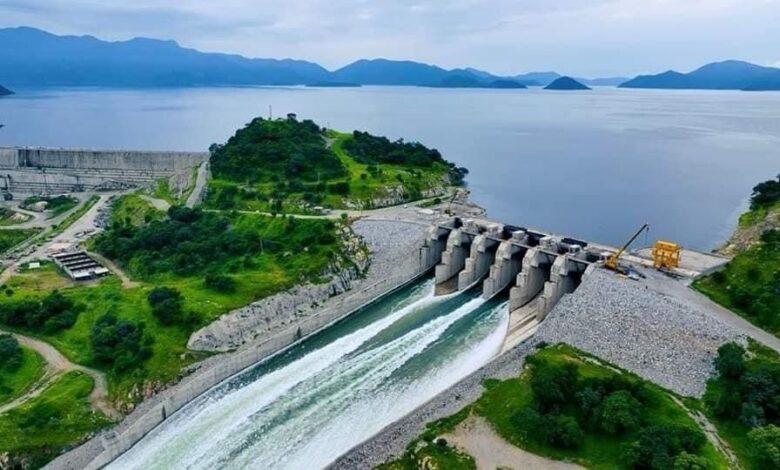
Professor of Geology and Water Resources at Cairo University, Abbas Sharaqi, noted that the flooding of some agricultural land on the banks of the Nile River in Egypt is a dire sign of Ethiopia’s lack of coordination with Egypt regarding the Grand Ethiopian Renaissance Dam (GERD).
In a Facebook post, Sharaqi explained that the lands that flooded in Monufia Governorate and elsewhere during April are “Nile Riverbank land” – meaning parts of the riverbanks or islands that are not usually reached by the Nile’s normal water levels.
The Ministry of Irrigation allows farmers to lease these lands, knowing that the Nile’s water level could rise at any time.
The current rise in the Nile River’s water level is occurring at an unusual and surprising time, the professor noted, especially since Lake Nasser is expected to be at its lowest levels now, near the end of the water year, in preparation for receiving rainfall from the new season.
“The lack of coordination between Egypt and Sudan with Ethiopia regarding the Renaissance Dam, due to the absence of an agreement, causes a state of ambiguity and confusion in planning water and agricultural policies, particularly in the smaller Sudanese dams downstream from the High Dam, due to the uncertainty surrounding the filling and discharge schedule of the Renaissance Dam,” he said.
He continued, “It is customary for the Nile’s water level to rise in some years with high rainfall, during which the High Dam’s reservoir fills up. If the flooding continues, the Toshka Spillway is opened, and if the inflow increases further, other gates of the High Dam are opened, leading to a rise in the Nile’s level and the flooding of some riverbank lands. This usually happens once every several years in September or October.”
Concerning floods
He pointed out that the Egyptian Ministry of Irrigation notified the governorates along the Nile River last October of the possibility of some riverbank lands being inundated, which is “expected” for this time.
However, he said the current water conditions in April, both at the GERD and the High Dam, do not warrant the increased flow from Lake Nasser as seen recently.
“Lake Nasser’s level is at its lowest during this time of year, which is the last quarter of the water year ending in July, after which the reception of the new year’s water begins. Furthermore, the Renaissance Dam’s turbines are not operational, and the discharge from it is currently at its lowest, around 12 million cubic meters per day. We are also at the end of the winter agricultural season, during which farmers begin harvesting crops, primarily wheat, and the summer season, with its water-intensive rice cultivation, has not yet begun.”
“The temperature has not yet risen significantly, as we are in spring with an average daytime temperature of 20-30 degrees Celsius. Hydrological changes in the Nile River require hundreds, even thousands of years, as do climate changes. However, fluctuations in the Nile’s flow have occurred for thousands of years, including the seven years of plenty and the seven years of famine, and the drought years of 1981-1987,” he explained.
The Egyptian Ministry of Irrigation had confirmed in a previous statement that the inundation of these lands with water is a recognized occurrence over the past decades, when specific discharges are released at different times throughout the year, within an integrated water management system aimed at ensuring water and economic security and maintaining the safety and integrity of Egypt’s water infrastructure.
The ministry clarified that the reason for the change in the timing of high discharge releases, which resulted in the rise in water levels and the flooding of these lands, is due to several variables, the most important of which are the altered hydrology of the river (the timing and volume of flows arriving from the Upper Nile) and the uncertainty surrounding the timing and quantities of water reaching Lake Nasser.
This comes in addition to regional and local climate change and its impact on rising temperatures, consequently increasing water demand and the early start of the agricultural season.




